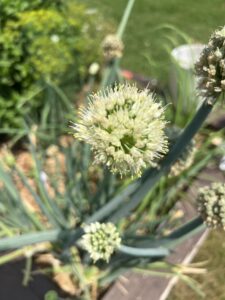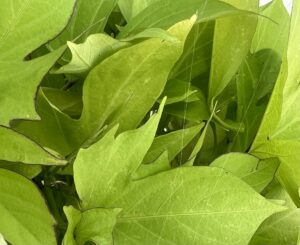Root vegetables are a diverse group of foods that are nutrient rich, high in vitamins, antioxidants and packed with carbohydrates. In some instances, root vegetables are considered super foods and are used for medicinal purposes as well. These vegetables typically grow underground, at the base of the plant, with the primary function of water and nutrient storage that will be later be used to feed the plant during the colder season. The culinary versatility of root vegetables is unmatched, as they typically show up as staples in a host of ethnic and plant-based meals. They can be used to influence the color, flavor, and texture of any dish.
Root vegetables can be classified into several different categories. Bulb root vegetables contain large bulbs where nutrients are stored. Examples of bulb vegetables include onions and garlic. Corms root vegetables have short thick stems that grow vertically and include the likes of taro, water chestnuts and celery root. Rhizomes are stems that grow underground horizontally and include vegetables such as ginger and turmeric. These root vegetables are well known for their medicinal properties and unique flavors. Tap root vegetables are typically the main root system of a plant that grows downwards into the soil. Besides storage and being the main source of a plant’s nutrients, the tap root also functions to provide deep anchorage and support for the plant. They are considered the true root vegetables and include popular vegetables such as carrots, parsnips, and beetroot. There are two types of tuber root vegetables, root tubers and stem tubers. Stem tubers are bulbous stems that grow underground while root tubers are swollen roots. Common examples on stem tubers include potatoes, yams, and jicama and that for root tubers, sweet potatoes, and cassava.
Growing root vegetables can be tricky, but very rewarding at the same time, since the edible portion grows underground. Each class of root vegetable has varied harvesting times and requires its own unique mix of soil, light and nutrients for optimal growth. Being equipped with the right tips and tricks will guarantee a successful growing and harvesting season.
Beet root is known for its distinct flavor profile and deep burgundy color. It is heavily utilized in salads, stews, soups and sometimes makes its way into delectable chocolate-based desserts and natural juices. It is high sugar, low in calories and is nutrient dense. Hands down, beet is considered a super food packed with antioxidant, nitrates, potassium, manganese, iron, folates and B vitamins, which is known to improve blood circulation and lower blood pressure. For these reasons, beet is an excellent candidate to be added to the roster of vegetables in a home garden.
Beets can be grown from seed clusters or the crown of the beet root itself. They thrive best in loamy soil (an equal balanced mixture of sand, silt, and clay) with either full sun or partial shade light exposure. Seeds should be soaked overnight at room temperature to aid in optimal germination of beet root seedlings. Sprouted seeds should be thinned to reduce overcrowding and promote healthy bulb development. If you choose to grow the beets from the crowns, then they should be soaked in water for several days and planted only after a healthy root system has developed. Beets are best suited when they are harvested small and young. To ensure a continuous supply of beets during the growing season, succession planting should be incorporated into your gardening practices. That is, planting new crops to replace what has been harvested every 2-3 weeks.
Carrots are classified as true root vegetables and belong to the tap root family. Known for its signature orange color, carrots are rich in beta carotene, antioxidants, vitamins, and minerals. Carrots are essential in supporting a healthy immune system, vision, and brain function. Like with beets, carrots can be grown from seeds or from the crown of a fresh carrot. Both the leaves and the root are edible, which gives carrots their versatility. Carrots are enjoyed best raw or cooked and are typically incorporated in salads, used as the base for soups and stews and make unique sauces and desserts. In addition to the popular orange hue, carrots can also be purple, red, white, or yellow, which also adds a layer of aesthetics of any dish containing these fun color varieties.
Carrots need loose, well drained sandy soil that is free from stones and has exposure to lots of sun light in order to thrive and fully develop into the well-known, thin, slender root structure we are used to seeing. Planting carrots from seeds can be a bit challenging as the seeds are very tiny. So, co-planting carrot seeds with radish seeds or a fast-growing vegetable will make it easier to identify planting rows. Radish grows and matures three times faster than carrots. Also, as the seeds sprout, the carrot seedlings should be thinned out to allow each carrot to get to its maximum size. Carrots take several months to mature, so one should be patient when growing these hearty vegetables. Seeds should be sown ¼ inch deep and planted every 3 weeks from early spring to mid-August to ensure continuous harvest during the growing season. To grow carrots from the carrot crown, the cut side of the carrot top should be placed in water and exposed to sunlight for several days. When new shoots emerge from the top, and small hair-like roots start to form around the edges, the carrot should be transplanted to the appropriate soil to complete its growth cycle.
As described above, potatoes are stem tubers and is the swollen portion of an extensive stem system of the potato plant. There is a large variety of potatoes that are all utilized in a host of ethnic dishes and different meal types. Russet, Yukon Gold and red potatoes are among the most popular varieties in North America. Russet potatoes are best when baked and topped with oils, herbs, mushrooms, beans and a host of other toppings. They are known to make the best French fries because of the low moisture and high starch content. Yukon Gold potatoes are my personal favorite. They are easy to cook, soft, creamy, and have a mild flavor which gives it the flexibility to be added to just about and dish and can be cooked in several different ways. Potatoes are high in starch, fiber, vitamins B6 and C and electrolytes such as potassium. They are naturally gluten free and known to improve digestive health, reduce blood pressure and aid in disease prevention because of the high antioxidant content.
Growing potatoes can be a very easy task. Potatoes grow best in loose, loamy soil and exposure to full sun light. For the average home gardener, potatoes are best propagated from seeded potatoes. That is potatoes that have started to sprout or bud from the nodes on the swollen stem. When planting from seeded potatoes, cuttings that include at least two eyes should be sown. Each cutting should be dried for a few days to promote hardening of the surface, which serves to protect the potato seed from soil-borne diseases and rot. When planting the seeded potatoes, sew in-ground cut side down. As soon as the leafy portion breaks ground, create a soil mound around the seedling. For ease of harvesting, potatoes should be planted in growing bags or containers.
Sweet potatoes are another variety of tubers that belongs to the root tuber family. They are a great source of fiber, vitamins, and minerals. The typical sweet potatoes found in North America are usually orange in color. However, there are also other colors found in this root vegetable, which includes the white, red, pink, violet, yellow, and purple varieties. Different color sweet potatoes boast different flavor profiles, unique textures, and nutrient blends. In general, members of the sweet potato family are rich in vitamin C, potassium, carbohydrates, fiber, and beta carotene, specifically for the orange type. Incorporating a serving of sweet potato in your daily diet will promote gut health, enhance healthy brain functions, improve vision, and support your immune system. These swollen root tubes are best suited for utilization in both sweet or savory dishes, where the sweet flavors are intensified when roasted or fried.
Sweet potatoes are typically grown from slips, which are small-rooted pieces of the tubers. Sweet potatoes grow best in warmer climates, in nutrient rich, well-drained soil that is slightly acidic. They are sun loving plants that take up to 4 months to mature. Sweet potatoes slips should be sown at least 8-10 inches deep and watered with at least 1 inch of water weekly. Like with potatoes, sweet potatoes are best harvested when grown in containers. During the growing cycle, the root size should be checked periodically at about 80 days to ensure that the root hasn’t overgrown. Overgrown roots can lead to root splitting. Another way to prevent root splitting, is to reduce watering when there is about 3 to 4 weeks left before harvesting. Sweet potatoes are usually ready to be harvested when the leaves on the vines start to turn yellow.
Radishes are quick growing root vegetables that instantly add a pop of color to fresh salads. Radishes are rich in antioxidants, minerals such as calcium and zinc, vitamins such as A, B6, C, E and K and electrolytes such as potassium. Consuming radish daily will help to support collagen production, lower blood pressure, and promote healthy digestive and heart systems. Radish can be consumed raw or cooked. Its crunchy, crispy textures and intense color makes it ideal for fresh salads and plating.
The average maturation time for radishes is approximately 45 days, which makes it ideal to plant for first time gardeners and children alike. Radishes grow best in cooler climates, well- drained soil that is nutrient rich, slightly acidic to neutral, and with an abundant exposure to sunlight. Soil should be kept moist to promote even growth. Seeds should be sown directly into the ground with about an ½ inch in depth. Seed germination takes about 7-10 days, with the best tasting radishes harvested when young, at about 30 days.
Ginger root has been in existence for thousands of years and was first used in ancient Chinese and Indian medicine to heal a variety of illnesses and aliments. Native to Asia, ginger is currently used for its medicine value, its intense peppery flavor, for meals, and in hair and skin care products due to its nourishing properties and aroma. Ginger in known to reduce inflammation, relieve nausea and pain, support a healthy digestive system and a healthy heart. Ginger is packed with a host of nutrients and minerals, which makes it a super food and quite flexible for use inside and outside the kitchen. It is rich in antioxidants, Vitamins B6 and C and essential elements such as manganese, copper, selenium, and zinc. Ginger root is used in teas, juices, desserts, soups, curry-based stews, and high starch dishes. My personal favorite use of ginger is in Thai-based cuisines and fruit juices.
Ginger requires a very long growing season in warmer climates and typically takes up to 10 months for full maturation. So, exercising patience is a definite must when considering adding ginger to your garden staples! For best results, ginger should be grown in partial shade with moderate watering. Like with sweet potatoes and potatoes, ginger can be propagated from pieces of ginger that has started to bud or develop an eye. Similar growing practices to growing potatoes must be adhered to, to have the most bountiful ginger harvest. If there is a desire to grow ginger in an area that experiences the four seasons, ginger should be grown in a pot where it can be moved periodically to ensure limited exposure to frost. Ginger is a root vegetable that keeps on giving. Once established, the plant will keep coming back for many growing seasons to come, if it is not exposed to temperatures below 25 degrees Fahrenheit.
When transitioning to a plant-based diet, growing your own fruits and vegetables will aid in promoting healthy diet choices along your journey, making your transition an easy and pleasurable one. Adding root vegetables to your garden lineup will help to diversify your food offerings and ensure that your nutrient intake is robust and balanced. Gardening can be such a rewarding chore. Hopefully the tips and recommendations offered will set you up for success and abundant harvesting this growing season. Happy Gardening!



Previously published on the Monitortribune.com on July 9, 2023.
